A listing and details about all known moves.
The discovery of "cognitive moves" (previously described as "Jigs") is a serious undertaking. Many of the most obvious moves have already been discovered and named. Other important moves have also been discovered. Today, there are 47 known moves (see Glossary of Moves).
If you think you have discovered a new cognitive move, please contact us at hub@cabreraresearch.org and we will: (1) confirm it, (2) award the Universal Cognitive Move Prize, (3) assign your name to the discovery of the move, and (4) add it to the Table of Known Cognitive Moves and Glossary of Moves.
History of Cognitive Moves
Origin -- the cognitive "jig"
What are Jigs?
Jigs are re-useable structures of knowledge and thinking that increase cognitive efficiency. Think of a jig as a common conceptual template that can be used over and over again in your thinking.
Where did the term "jig" come from? A jig refers to "a device that holds a piece of work and guides the tools operating on it." Carpenters use jigs all the time to do repeated operations that would otherwise (without the jig) take a lot of time and effort. Jigs are very practical because they save you cognitive time and effort. Cognitive jigs are not only useful but often have fun or funny names. Because they are meant to be useful and memorable.
ORIGIN: The term Jig is mid-16th century and of unknown origin; the term cognitive jig (and later "move") was coined by Derek Cabrera to communicate the practical and tactile use of cognitive jigs as a way to identify, use, and reuse cognitive patterns (mental models) that are common or repeatedly used.
Check these places for more information about "jigs" prior to being called Moves:
- Jig definition
- Read these blogs on the basics of Jigs:
-
- What are Jigs? (introductory blog)
- Jigs Blogs Tag (a list of blogs about jigs)
- Jigs and Sliders: The Cognitive Templates of the 21st Century
- Cabrera, D. and Cabrera, L. (2021) Developing Personal Mastery of Systems Thinking. In, Routledge Handbook of Systems Thinking, (Eds) Cabrera, D., Cabrera, L. and Midgley, G. Routledge. London, UK.
- Jig Map of Maps (somewhat outdated)
Evolution -- Renaming to "Cognitive Moves"
In 2021, Cabrera renamed "jigs" to "moves." Cabrera explains, "Moves is a great description for the reusability of common structures but they tend not to be dynamic and adaptable. The term moves is much more accurate because its something one practices and refines through practice. The more you do the move the more you burn the neurons. You can practice moves much like dribbling or shooting in basketball, child's pose or downward dog in yoga, or benching and curling in weight lifting. Doing these moves in practice can translate to better movement in real life situations. Moves are dynamic and can be combined, much like you can combine a squat with a lunge and a raise. You also can better understand a move by understanding its starting and ending point."
.png?width=688&height=467&name=Can%20Dos%20%26%20Protocols%20(5).png)
Cabrera gives various discovered moves common, basic, and memorable names such as “Barbells,” “P-circles,” “R-channels,” and “Part-parties.” Analogies, similes, and metaphors are cognitive moves as well. To date, 47 cognitive moves have been formally identified, but Cabrera estimates there are hundreds (if not thousands) more. Cabrera identifies the degree of content-agnosticism of a move as an indicator of its universality. The more a move is content agnostic, the more universal it is, and perhaps the more difficult it is to discover.
A Pareto Law (80/20 Rule) Discovered: The Big 5+ Moves
Research from Cabrera Lab with over 35,000 people showed that a pareto law (80/20 rule) existed in the moves. This is a significant discovery because it means that while there are many moves, just practicing 5 of them will provide the biggest benefit--the most reward for effort. This discovery means we know the ideal things to practice in thinking. These five moves are:
- Is/Is Not Move
- Zoom in/Zoom Out Move
- Part Party! Move
- RDS Barbell Move
- P-Circle Move
+ Move Mash up (combining these five moves in combos and triples etc., is the "+")
How are moves discovered?
Moves are common structures that can be seen as patterns of thought. Moves are called "molecular structures" because they are complexes that are made up of lesser "atomic" DSRP structures + [sometimes] content information.
- Atomic conceptual structures = the most basic elements (Dio, Spw, Rae, and Ppv)
- Molecular conceptual structures = relatively simple or complex structures that combine atomic structures and information content in a way that are useful and re-useable.
What criteria determines whether something is a Move?
There are currently three criteria that determine whether something is a Move:
- Content-agnostic: Moves are [almost entirely] content agnostic.This means that most of the structure of a Moves can receive any content-information. There are some Moves that require very abstract content-information such as "leads to" or "is same as"; this is noted in the Moves CAR number and indicated in red in the Moves' DSRP Script.
- Molecular: Moves are by definition molecular. They are not "atomic" (solely patterns and elements of DSRP). They are also not large conglomerations. The molecularism of a Move is given by its atomic number.
- Common: Moves are by definition common structures in that they are not merely one of the many DSRP permutations that can occur but a permutation that exists in common use.
You already use Moves...
You are already familiar with Moves eve if you are new to the term. Here are some common Moves you are already familiar with
- Lists
- Metaphors
- Analogies
- Similes
- Cause-Effect
- Inference
- Tables
Table of Known Moves

Click to download viewable image of Table of Moves
Key to Reading Move Entries in Table of Known Moves:

Key to Atomic No. and CAR No.
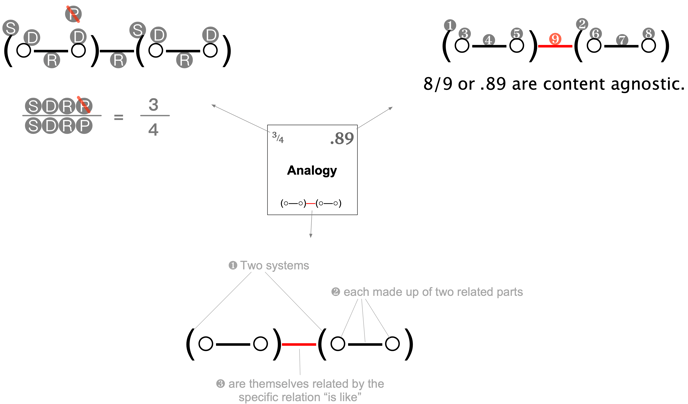
Key to Reading DSRP Script:
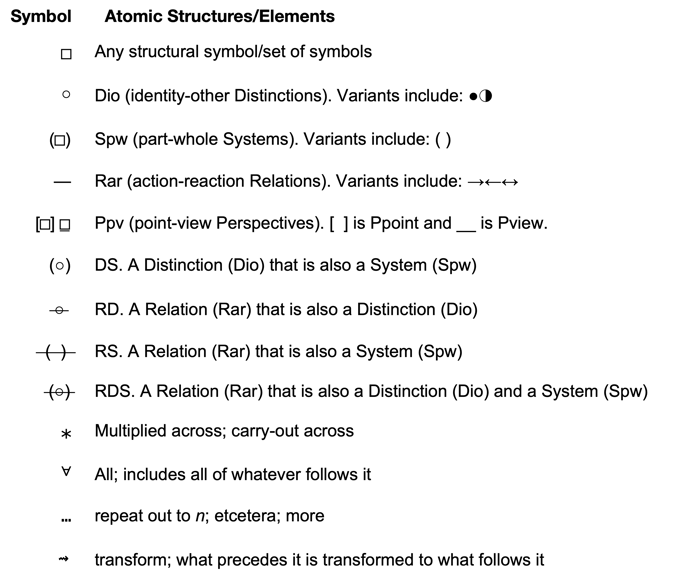
DSRP Script v2.0
DSRP Script (originally called TAO Script) could be used as a textual input (say on a mobile device) to maps. By entering various simple text strings, the user could create maps. DSRP Script could be a simple script language that the user memorizes or it could be a text field that comes with the various symbols in a menu to help the user or perhaps the basis for a DSRP-UML
DSRP Script is a symbolic scripting language that has several advantages. Unlike DSRP Maps, which are nonlinear, DSRP Script allows the user to create a string of characters that mimics the structure of DSRP Maps. In addition, DSRP Script allows users to quickly detail the structure of a mental model (especially Moves) using only the symbols available on any keyboard. The Table below lists the elements of the DSRP Scripting grammar. Certain symbols in the script are attained using strikethrough (command + shift + x) or underline (command + u). The □, ○, ∀, and ⇝ symbols are special characters. Each of the elements of DSRP Script can be combined to form various structural operations.

For example, the structural formula for an analogy Move is: (○—○)—(○—○) which simple says that there are two related elements forming two systems ( (○—○) and (○—○) ) which are themselves related by a content-specified relationship (in this case the — signifies the content “is similar to”).
Another example is P-Circle Move. a P-circle Move tells us that we can identify any number of Perspectives on any given situation, phenomenon, or system. The structural formula for which is [○] [○]…*□. This formula explains that there are at least two distinctions that are acting as points of view ([○] [○]) and there could be as many more as desired to n (...). These points are applied (*) to any structure (□). In this case the □ represents any of the DSRP structures containing any content whatsoever. The underlining (□) represents that whatever is underlined is the view from the point(s). Note that the structural formula for the P-Circle Move, unlike that of the Analogy Move, does not show any of the symbols in red. This means that the structure is entirely content-agnostic. It makes no difference what content one puts into the Move. In fact, the Move could accept entirely randomized content. This is one of the chief defining features of Moves—that their Content Agnosticism Ratio (CAR) is quite high and therefore that the structure is predominantly structural.
For a PDF of this DSRP Script description go here.
A List of Known Moves
Click on links for associated maps and blog posts.
^^ ‘Discovery’ is a somewhat complex concept with regard to cognitive structures such as Moves. Does discovery occur on its first realization and use or the first written works mentioning it? Feedback loops, for example, have existed in nature presumably since the origin of the universe. It is likely people thought of feedback loops long before Harold Black discovered them in 1927. Even Harold likely didn’t see feedback loops as a common reusable cognitive structure as Forrester did. In general, we try to ascertain the original source of discovery. But the discovery of a Move is really determined by “when it was first recognized as a reusable, generalizable cognitive structure.
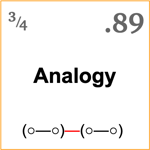
Universal Move Number 0001
Proper Name Analogy
DSRP Script (○—○)—(○—○)
Explicit DSRP No. (Atomic No.) 3/4
Content Agnosticism Ratio (CAR) 0.89
Description/Map/WriteUp Analogy Move: Note how some of the information or structure of a Move can be either variable or fixed
Article Analogy Move
Discovered by Nicholas of Paris (c. 1220)
Structural Map https://www.plectica.com/maps/174SXDFV0/

Universal Move Number 0002
Proper Name Metaphor
DSRP Script ○—○
Explicit DSRP No. (Atomic No.) 2/4
Content Agnosticism Ratio (CAR) 0.67
Description/Map/WriteUp Metaphor Move: Note that a sight change in the fixed information can change the Move
Article Metaphor Move
Discovered by
Structural Map https://www.plectica.com/maps/ZO5SM9XOM
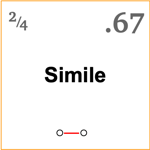
Universal Move Number 0003
Proper Name Simile
DSRP Script ○—○
Explicit DSRP No. (Atomic No.) 2/4
Content Agnosticism Ratio (CAR) 0.67
Description/Map/WriteUp Simile Move: Note how some of the information or structure of a Move can be either variable or fixed
Article Simile Move
Discovered by
Structural Map https://www.plectica.com/maps/01RCC9MM7/
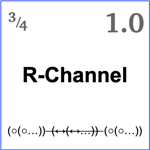
Universal Move Number 0004
Proper Name R-channel
DSRP Script (○(○…)) (↔(↔…)) (○(○…))
Explicit DSRP No. (Atomic No.) 3/4
Content Agnosticism Ratio (CAR) 1.00
Description/Map/WriteUp An R-channel: A simple structure that can be used to compare the relationships between two systems made up of parts. Any time you want to relate two systems, an R-channel is the Move for you. It's called an R-channel because the structure of the Move "opens up a channel of space" in the middle to create many relationships across the systems
Article An R-channel
Discovered by D. Cabrera
Structural Map https://www.plectica.com/maps/1OYL2QZ41/
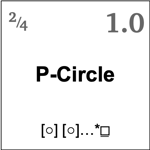
Universal Move Number 0005
Proper Name P-circle
DSRP Script [○] [○]…*□
Explicit DSRP No. (Atomic No.) 2/4
Content Agnosticism Ratio (CAR) 1.00
Description/Map/WriteUp P-circle: The "Perspective Circle" Move: A simple common structure that looks at a view from multiple points. Create a circle of perspectives around any item, situation, event, or system.
Article P-circle
Discovered by D. Cabrera
Structural Map https://www.plectica.com/maps/TD9P20DG4/
Big 5+ Member: this move is one of the Big5+ Moves

Universal Move Number 0006
Proper Name Category
DSRP Script [○]*(○(○…))
Explicit DSRP No. (Atomic No.) 3/4
Content Agnosticism Ratio (CAR) 1.00
Description/Map/WriteUp Category Move
Article Category Move
Discovered by D. Cabrera
Structural Map https://www.plectica.com/maps/EA1M104V9/
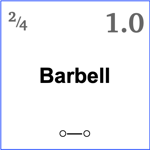
Universal Move Number 0007
Proper Name Barbell
DSRP Script ○—○
Explicit DSRP No. (Atomic No.) 2/4
Content Agnosticism Ratio (CAR) 1.00
Description/Map/WriteUp Barbell Move: A simple common structure that helps us zoom into the relationship between two things. Named after a "barbell" because of its structure.
Article Barbell Move
Discovered by D. Cabrera
Structural Map https://www.plectica.com/maps/98AS05M11/
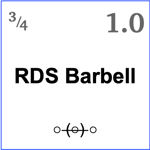
Universal Move Number 0008
Proper Name RDS Barbell
DSRP Script ○ (○) ○
Explicit DSRP No. (Atomic No.) 3/4
Content Agnosticism Ratio (CAR) 1.00
Description/Map/WriteUp RDS Barbell: A barbell where the Relationship (R) is also a Distinction (D) and a System (S)
Article RDS Barbell
Discovered by D. Cabrera
Structural Map https://www.plectica.com/maps/98AS05M11/
Big 5+ Member: this move is one of the Big5+ Moves
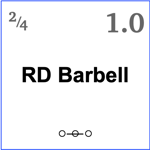
Universal Move Number 0009
Proper Name RD Barbell
DSRP Script ○—○—○
Explicit DSRP No. (Atomic No.) 2/4
Content Agnosticism Ratio (CAR) 1.00
Description/Map/WriteUp RD Barbell: A barbell where the Relationship (R), is also a Distinction (D).
Article Barbell Move
Discovered by D. Cabrera
Structural Map https://www.plectica.com/maps/98AS05M11/
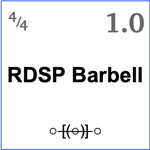
Universal Move Number 0010
Proper Name RDSP Barbell
DSRP Script ○ [(○)] ○
Explicit DSRP No. (Atomic No.) 4/4
Content Agnosticism Ratio (CAR) 1.00
Description/Map/WriteUp Add P to the R on an RDS Barbell
Article Not available
Discovered by D. Cabrera
Structural Map https://www.plectica.com/maps/98AS05M11/
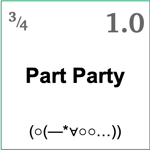
Universal Move Number 0011
Proper Name Part Party
DSRP Script (○(—*∀○○…))
Explicit DSRP No. (Atomic No.) 3/4
Content Agnosticism Ratio (CAR) 1.00
Description/Map/WriteUp Standard Part Party: A Move that helps us to relate the parts of a whole. Like a good party, the parts need to interact. A pervasive Move of all complex systems. Any good party involves interactions between the guests. Cognitive systems are no different--the parts must "part-ay"
Article Standard Part Party
Discovered by D. Cabrera
Structural Map https://www.plectica.com/maps/FIK68PLX7
Big 5+ Member: this move is one of the Big5+ Moves
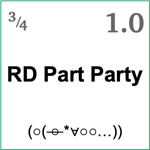
Universal Move Number 0012
Proper Name RD Part Party
DSRP Script (○( ○ *∀○○…))
Explicit DSRP No. (Atomic No.) 3/4
Content Agnosticism Ratio (CAR) 1.00
Description/Map/WriteUp RD Part Party: A Move that helps us to distinguish and relate the parts of a whole.
Article See Standard Part Party
Discovered by D. Cabrera
Structural Map https://www.plectica.com/maps/FIK68PLX7
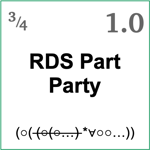
Universal Move Number 0013
Proper Name RDS Part Party
DSRP Script (○( (○(○…) *∀○○…))
Explicit DSRP No. (Atomic No.) 3/4
Content Agnosticism Ratio (CAR) 1.00
Description/Map/WriteUp RDS Part Party: A Move that helps us to distinguish and relate the parts of a whole.
Article See Standard Part Party
Discovered by D. Cabrera
Structural Map https://www.plectica.com/maps/FIK68PLX7
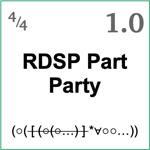
Universal Move Number 0014
Proper Name RDSP Part Party
DSRP Script (○( [ (○(○…) ] *∀○○…))
Explicit DSRP No. (Atomic No.) 4/4
Content Agnosticism Ratio (CAR) 1.00
Description/Map/WriteUp Add P to the R on RDS Barbells between parts in the S
ArticleNot available
Discovered by D. Cabrera
Structural Map https://www.plectica.com/maps/Y0HRSIGKF/
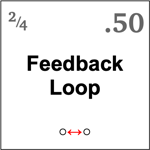
Universal Move Number 0015
Proper Name Feedback Loop
DSRP Script ○↔○
Explicit DSRP No. (Atomic No.) 2/4
Content Agnosticism Ratio (CAR) 0.50
Description/Map/WriteUp Feedback Loop Move: A very popular variation on Cycle Systems where 2 or more identities are relating in such a way as to alter each other in feedback.
ArticleNot available
Discovered by Harold Black 1927
Structural Map https://www.plectica.com/maps/B2SD1FRKP/

Universal Move Number 0016
Proper Name Compare and Contrast
DSRP Script ○↔○
Explicit DSRP No. (Atomic No.) 2/4
Content Agnosticism Ratio (CAR) 0.50
Description/Map/WriteUp Compare & Contrast: A compare and contrast Move is a very common Move that helps us to Distinguish how things are different and/or the same by using compare/contrast relationships.
Article Not available
Discovered by unknown origin, likely dates back to antiquity
Structural Map https://www.plectica.com/maps/O4VQGO07K/

Universal Move Number 0017
Proper Name Dio Opportunity Cost
DSRP Script ○⇝(○(○(○…))(●(○…)))
Explicit DSRP No. (Atomic No.) 2/4
Content Agnosticism Ratio (CAR) 0.50
Description/Map/WriteUp Dio Opportunity Costs: Dio means Distinction and its two elements identity and other. In this alternative case, you are thinking more about the "o" that occurs when you decide the "i". This Move identifies the "opportunity cost" of making a distinction.
Article Not available
Discovered by D. Cabrera
Structural Map https://www.plectica.com/maps/WCKL9Z4DL/
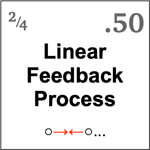
Universal Move Number 0018
Proper Name Linear Feedback Process
DSRP Script ○→←○...
Explicit DSRP No. (Atomic No.) 2/4
Content Agnosticism Ratio (CAR) 0.50
Description/Map/WriteUp Linear Feedback Move illustrates a linear process of related elements in which each successive element exhibits feedback to some or all previous elements.
Article Not available
Discovered by D. Cabrera
Structural Map https://www.plectica.com/maps/MXUAC48QI/
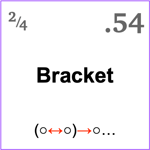
Universal Move Number 0019
Proper Name Bracket
DSRP Script (○↔○)→○…
Explicit DSRP No. (Atomic No.) 2/4
Content Agnosticism Ratio (CAR) 0.54
Description/Map/WriteUp Bracket Diagram.
Article Not available
Discovered by Raymond Llull, a thirteen-century Spanish philosopher, used tree representations in Arbor scientiae, published in 1296 and may be said to have invented it as a conceptual structure. The bracket is a derivative of a tree diagram.
Structural Map https://www.plectica.com/maps/FD5EJAJTH/
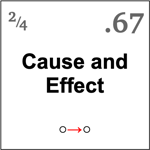
Universal Move Number 0020
Proper Name Cause-Effect
DSRP Script ○→○
Explicit DSRP No. (Atomic No.) 2/4
Content Agnosticism Ratio (CAR) 0.67
Description/Map/WriteUp Cause/Effect Move: An often used Move establishing cause and effect.
Article Cause/Effect Move
Discovered by likely dates back to antiquity in its use.
Structural Map https://www.plectica.com/maps/O6HF9HCPZ
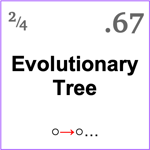
Universal Move Number 0021
Proper Name Evolutionary Tree
DSRP Script ○→○...
Explicit DSRP No. (Atomic No.) 2/4
Content Agnosticism Ratio (CAR) 0.67
Description/Map/WriteUp Evolutionary Tree Move: a linear tree with branches showing the relationships between predecessors and successors
Article Not available
Discovered by Charles Darwin in 1859
Structural Map https://www.plectica.com/maps/QAY83XDA3/
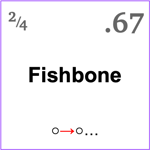
Universal Move Number 0022
Proper Name Fishbone
DSRP Script ○→○...
Explicit DSRP No. (Atomic No.) 2/4
Content Agnosticism Ratio (CAR) 0.67
Description/Map/WriteUp Fishbone diagram: Also called an Ishikawa Diagram or a cause and effect diagram, is a Move for distinguishing the potential causes of a problem in order to identify its root causes.
Article Fishbone diagram
Discovered by Kaoru Ishikawa in 1968.
Structural Map https://www.plectica.com/maps/W49GQOI98
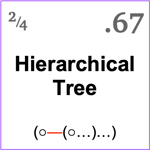
Universal Move Number 0023
Proper Name Hierarchical Tree
DSRP Script (○—(○…)…)
Explicit DSRP No. (Atomic No.) 2/4
Content Agnosticism Ratio (CAR) 0.67
Description/Map/WriteUp Hierarchical Tree: A hierarchical tree is quite similar to a bracket diagram but red top-bottom rather than left-right.
Article Hierarchical Tree
Discovered by First use of word hierarchy (Oxford English Dictionary) was in 1881.
Structural Map https://www.plectica.com/maps/ZO5SM9XOM
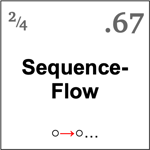
Universal Move Number 0024
Proper Name Sequence-Flow Map
DSRP Script ○→○...
Explicit DSRP No. (Atomic No.) 2/4
Content Agnosticism Ratio (CAR) 0.67
Description/Map/WriteUp Sequence/Flow Map Move: A linear sequence of identities and relationships (like a number line). A variation on the sequence/flow Move involves variables that are plotted over time or in stepwise relation to each other but that can include multiple levels or scales and identities can have parts (S). Flow maps can be entirely linear, or contain feedback and the variables themselves can contain parts.
Article Not available
Discovered by The flow chart was invented by Frank Gilbreth in 1921. Do to its conceptual origins, it can be said that Gilbreth understood its reusable and content agnostic properties and therefore that he 'discovered' this Move.
Structural Map https://www.plectica.com/maps/62P1GGQTV/

Universal Move Number 0025
Proper Name Dio List aka Is/Is Not List
DSRP Script (○(○…))(●(○…))
Explicit DSRP No. (Atomic No.) 2/4
Content Agnosticism Ratio (CAR) 1.00
Description/Map/WriteUp Dio List: Dio means Distinction and its two elements identity and other. You're making a list of the two elements. Very helpful in defining things at a basic level.
Article Not available
Discovered by D. Cabrera
Structural Map https://www.plectica.com/maps/26J8C7IK2/
Big 5+ Member: this move is one of the Big5+ Moves
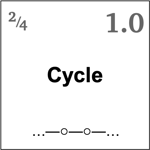
Universal Move Number 0026
Proper Name Cycle
DSRP Script …—○—○—…
Explicit DSRP No. (Atomic No.) 2/4
Content Agnosticism Ratio (CAR) 1.00
Description/Map/WriteUp Cycle Systems: a set of 2 or more identities that are related in a circle (e.g., a feedback loop; a cycle, etc.).
Article Not available
Discovered by Use in language dates to 14 century. Origin likely dates back to antiquity.
Structural Map https://www.plectica.com/maps/KR9LMUWE6/
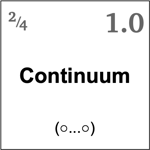
Universal Move Number 0027
Proper Name Continuum
DSRP Script (○...○)
Explicit DSRP No. (Atomic No.) 2/4
Content Agnosticism Ratio (CAR) 1.00
Description/Map/WriteUp Continuum Move: A continuum Move is used to plot a few options (usually 2, 3, 4) "along a continuum." It should be noted that there is always at least an implicit organizing perspective that creates the continuum (from X to Y, Less A, More B, etc).
Article Not available
Discovered by Use in language dates to 1640s. Origin likely dates back to antiquity.
Structural Map https://www.plectica.com/maps/AXIVLRT6M/
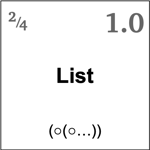
Universal Move Number 0028
Proper Name List
DSRP Script (○(○…))
Explicit DSRP No. (Atomic No.) 2/4
Content Agnosticism Ratio (CAR) 1.00
Description/Map/WriteUp A List Move: A list is a very well-known and popular Move that allows for a part-whole itemization
Article A List Move
Discovered by Benjamin Franklin popularized the 'to-do' list as a means of self improvement, although lists were used for centuries prior to Franklin.
Structural Map https://www.plectica.com/maps/3FC584JSV/
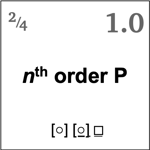
Universal Move Number 0029
Proper Name nth-order P
DSRP Script ...[○] [○] □
Explicit DSRP No. (Atomic No.) 2/4
Content Agnosticism Ratio (CAR) 1.00
Description/Map/WriteUp Nth Order Perspective: A common structure that helps us see our bias in looking at a perspective. Sometimes it is important to look at a perspective on a system from a second-order perspective or an nth-order perspective.
Article Not available
Discovered by D. Cabrera
Structural Map https://www.plectica.com/maps/GNGCVXDTY

Universal Move Number 0030
Proper Name R-circle
DSRP Script ○—*○○…
Explicit DSRP No. (Atomic No.) 2/4
Content Agnosticism Ratio (CAR) 1.00
Description/Map/WriteUp R Circle: An R circle is just a bunch of variables relating in some way to a center variable. The Rs could be causal or not. Often used to map webs of causality in relation to some effect.
Article Not available
Discovered by D. Cabrera
Structural Map https://www.plectica.com/maps/Y64WB1GL2/
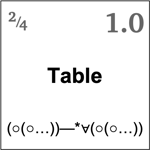
Universal Move Number 0031
Proper Name Table
DSRP Script (○(○…))—*∀(○(○…))
Explicit DSRP No. (Atomic No.) 2/4
Content Agnosticism Ratio (CAR) 1.00
Description/Map/WriteUp Table Move: A part-whole Move consisting of a square grid of parts
Article Table Move
Discovered by "Tables" were likely first used in the medieval counting houses where an actual table was covered with a checkered cloth to count coin.
Structural Map https://www.plectica.com/maps/156XE246W/
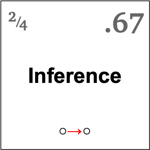
Universal Move Number 0032
Proper Name Inference
DSRP Script ○→○
Explicit DSRP No. (Atomic No.) 2/4
Content Agnosticism Ratio (CAR) 0.67
Description/Map/WriteUp Inference Move: a conclusion reached on the basis of evidence and reasoning. See map).
Article Not available
History Aristotle (384–322 BCE) is often credited with the earliest systematic study of inference
Discovered by Andrew Hathaway and Laura Frangipane.
Structural Map https://www.plectica.com/maps/UCARDBVUG/
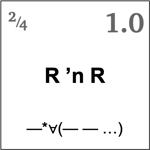
Universal Move Number 0033
Proper Name R'nR
DSRP Script —*∀(— — …)
Explicit DSRP No. (Atomic No.) 2/4
Content Agnosticism Ratio (CAR) 1.00
Description/Map/WriteUp R'nR Move or Relate the Relations Move makes relationships between a set of relationships.
Article Not available
Discovered by D. Cabrera
Structural Map https://www.plectica.com/maps/3WDHUO50C

Universal Move Number 0034
Proper Name P on Rs
DSRP Script [○](— — …)
Explicit DSRP No. (Atomic No.) 2/4
Content Agnosticism Ratio (CAR) 1.00
Description/Map/WriteUp P on Rs Move takes a perspective on a set of Relations.
Article Not available
Discovered by D. Cabrera
Structural Map https://www.plectica.com/maps/Q55S10C9H
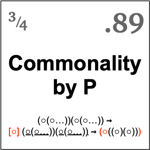
Universal Move Number 0035
Proper Name 'Fruit Move' or Commonality by P
DSRP Script (○(○…))(○(○…)) ⇝ [○] (○(○…))(○(○…)) ⇝ (○((○)(○)))
Explicit DSRP No. (Atomic No.) 3/4
Content Agnosticism Ratio (CAR) 0.89
Description/Map/WriteUp Commonality P Move: a.k.a. Fruit Move because when a situation gives you apples and oranges (i.e., incompatibilities) sometimes you have to look for the common whole which is born of the common part(s).
Article Not available
Discovered by D. Cabrera
Structural Map https://www.plectica.com/maps/NKI7D7M3A/
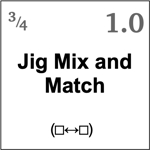
Universal Move Number 0036
Proper Name Move Mix and Match
DSRP Script (□↔□)
Explicit DSRP No. (Atomic No.) 3/4
Content Agnosticism Ratio (CAR) 1.00
Description/Map/WriteUp Mix and Match Move a simple but powerful Move that combines two or more Moves into a new composite Move.
Article Mix and Match Move
Discovered by D. Cabrera
Structural Map https://www.plectica.com/maps/JX33CK0IL/
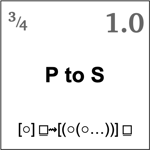
Universal Move Number 0037
Proper Name P to S
DSRP Script [○] □⇝[(○(○…))] □
Explicit DSRP No. (Atomic No.) 3/4
Content Agnosticism Ratio (CAR) 1.00
Description/Map/WriteUp P to S Move (Perspectival System): A Move to help avoid the bias of homogeneous perspectives of groups (or an individual). Rather than turning an S into a P like in S-to-P Move, you're turning a P into an S.
Article Not available
Discovered by D. Cabrera
Structural Map https://www.plectica.com/maps/0T6NAU1J0/

Universal Move Number 0038
Proper Name S of Rs
DSRP Script (— — …)
Explicit DSRP No. (Atomic No.) 3/4
Content Agnosticism Ratio (CAR) 1.00
Description/Map/WriteUp System of Relationships Move (S of Rs): An important Move where a set of relationships (Rs) are seen as working as a system (S).
Article System of Relationships Move (S of Rs)
Discovered by D. Cabrera
Structural Map https://www.plectica.com/maps/3F08F1IM7/
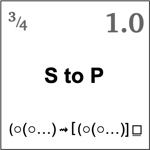
Universal Move Number 0039
Proper Name S to P
DSRP Script (○(○…) ⇝[(○(○…)] □
Explicit DSRP No. (Atomic No.) 3/4
Content Agnosticism Ratio (CAR) 1.00
Description/Map/WriteUp S to P Move (System to Perspective): A common structure Move where a system or a system of related parts (a part party) is transformed into a perspective that can be used to look at a problem, situation or phenomenon differently. Could also be called, “S to P on an S” Move because this Move is a great way to solve a problem and use an understanding of the system you are analyzing to abstract an overarching lens to be used in future evolutions of the current problem system or future systems. All frameworks and most Fropping rules are S to P Moves.
Article S to P Move (System to Perspective)
Discovered by D. Cabrera
Structural Map https://www.plectica.com/maps/1BZFJJB5S/

Universal Move Number 0040
Proper Name XY Graph
DSRP Script (○...○)↔(○...○)
Explicit DSRP No. (Atomic No.) 3/4
Content Agnosticism Ratio (CAR) 1.00
Description/Map/WriteUp Cartesian XY Graph: A well-known and often used Move that combines two Continuum Moves with a system of parts plotted on each axis. (btw it takes two continuum jogs to make an XY Move)
Article Cartesian XY Graph
Discovered by René Descartes
Structural Map https://www.plectica.com/maps/WWECGLHDD/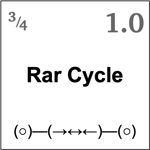
Universal Move Number 0041
Proper Name Rar Cycle
DSRP Script (○)—(→↔←)—(○)
Explicit DSRP No. (Atomic No.) 3/4
Content Agnosticism Ratio (CAR) 1.00
Description/Map/WriteUp Rar Move: Rar Move is a composite of things you can do with the most basic elements (action-reaction) of Relationships (R). It is a very powerful set of Moves that can be used to zoom into what is really going on when two or more things relate. Rar zooms into the dynamics of any Rs but especially psychotherapeutic or CBT (stimulus-response, etc)
Article Rar Move
Discovered by D. Cabrera
Structural Map https://www.plectica.com/maps/U2XXIWQG1/
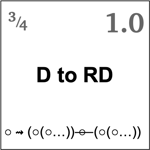
Universal Move Number 0042
Proper Name D to RD
DSRP Script ○ ⇝ (○(○…)) ○ (○(○…))
Explicit DSRP No. (Atomic No.) 3/4
Content Agnosticism Ratio (CAR) 1.00
Description/Map/WriteUp D to RD Move: Take an identity and transform it into a Relation and then ask all the things it relates as a barbell between two Ss.
Article Not available
Discovered by D. Cabrera
Structural Map https://www.plectica.com/maps/FIK68PLX7
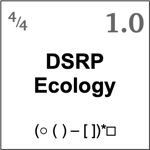
Universal Move Number 0043
Proper Name DSRP Ecology
DSRP Script (○ ( ) – [ ])*□
Explicit DSRP No. (Atomic No.) 4/4
Content Agnosticism Ratio (CAR) 1.00
Description/Map/WriteUp Basic DSRP Ecology Move: A Move, like ecology Move that explicates DSRP structure relatively consistently across all elements.
Article Not available
Discovered by D. Cabrera
Structural Map https://www.plectica.com/maps/5PKYL9LVH/
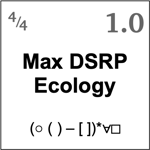
Universal Move Number 0044
Proper Name Max DSRP Ecology
DSRP Script (○ ( ) – [ ])*∀□
Explicit DSRP No. (Atomic No.) 4/4
Content Agnosticism Ratio (CAR) 1.00
Description/Map/WriteUp P Ecology Move: A Move where every element in the network is also a perspective ON the network. The basic ecological relationships.
Article P Ecology Move
Discovered by D. Cabrera
Structural Map https://www.plectica.com/maps/TVGQBIPKY
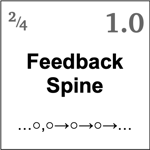
Universal Move Number 0045
Proper Name Feedback Spine
DSRP Script …○,○→○→○→…
Explicit DSRP No. (Atomic No.) 2/4
Content Agnosticism Ratio (CAR) 1.00
Description/Map/WriteUp The Feedback Move illustrates that two identities bring about a third identity which in turn brings about a fourth identity which in turn feedbacks to the first and second identities, forming the look of a spine with ascending ribs.
Article Not available
Discovered by Carter Cabrera, March 2021
Structural Map https://www.plectica.com/maps/7LIBSDAHR

Universal Move Number 0046
Proper Name NS to 1S
DSRP Script (○(—*∀○○…)) (○(—*∀○○…)) ⇝ (○(—*∀○○…))
Explicit DSRP No. (Atomic No.) 3/4
Content Agnosticism Ratio (CAR) 1.00
Description/Map/WriteUp The name NS to 1S captures what this Move is doing by taking N number of systems and integrating them into 1 system. Sometimes this will result in higher levels of abstraction, in others it will result in boundary crossing ideas (sort of like how I imagine biochemistry came to be). This Move is inspired by John Boyd's work in his 1976 article Destruction and Creation.
Article Not available
Discovered by Austin Wiggins, September 2022
Structural Map https://www.plectica.com/maps/B3ZX9Q885
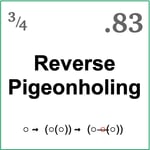
Universal Move Number 0047
Proper Name Reverse Pigeonholing
DSRP Script ○ ⇝ (○(○)) ⇝ (○—○—(○))
Explicit DSRP No. (Atomic No.) 3/4
Content Agnosticism Ratio (CAR) 0.83
Description/Map/WriteUp The Reverse Pigeonholing Move is a maladaptive Move (meaning it is something you shouldn't do) that explains the common structure associated with assuming that the part is an instantiation of a whole simply because the part exists in that whole sometimes. See the map for the structure and examples of this Move.
Article Not available
Discovered by D. Cabrera, October 2022
Structural Map https://www.plectica.com/maps/4W4HFZP7M
